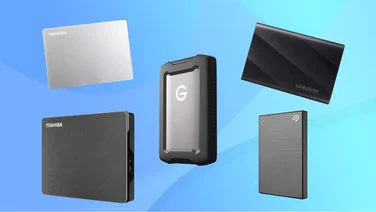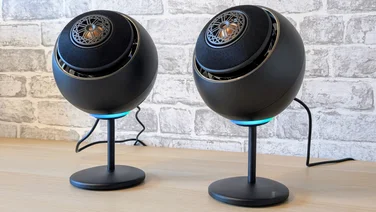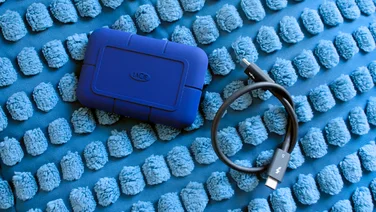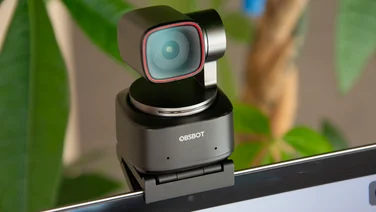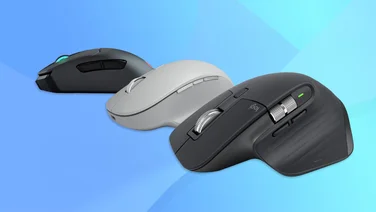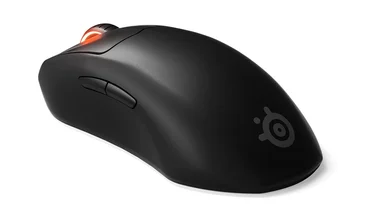To help us provide you with free impartial advice, we may earn a commission if you buy through links on our site. Learn more




If you spend a lot of time in lectures or meetings or conduct interviews, you’ll probably have acquired a variety of tools to help you track the information, from traditional notebooks to voice recorders or even special apps for your mobile phone. However, the more tools you use, the more effort you’ll need to invest in keeping all your notes – recordings, writing and diagrams – together.
Livescribe’s Echo Smartpen is designed to help you record, organise and access all your notes using one device and one piece of software. It’s also built with sharing in mind – the Livescribe Desktop software lets you publish your saved notes via Facebook or store them online with Evernote or on a free 500MB online storage drive provided by Livescribe.
The Echo Smartpen is definitely the cleverest writing implement we’ve ever owned. It even guides you through its own setup process. As you follow the steps in the Interactive Getting Started Guide booklet, the pen talks you through each one via a built in speaker. There’s a 3.5mm headphone jack if you don’t want to share what you’re doing with the rest of the room. A tiny 96×18 OLED screen displays its status and a microUSB port lets you connect it to your PC. The integrated battery should last 5.5 hours for simultaneous audio and text capture and up to 13 hours for text capture alone.

The pen can’t function without Livescribe’s special dot paper. It’s exactly what it sounds like – paper with hundreds of tiny pale blue dots printed all over it, so small that they’re only visible close up and merely give the paper a pale blue tint from any normal distance. The tip of the smartpen houses a tiny infrared camera, which takes 72 photographs of the paper every second. The camera captures a 36-dot grid, which the software then decodes to provide precise coordinates for the pen’s current position. It’s this location information that is recorded and turned into the digital version of your document, perfectly tracking the movements of the smartpen as you write and draw with it.

The dot paper also has a number of pictures which function as icons. If you tap the pen on the picture of a record button, the pen’s microphone will start recording audio until you stop or pause it – there are buttons for that, too. You can also play back the last audio recording associated with the page and jump to specific positions in an audio track. Other buttons allow you to adjust playback speed and volume, while a navigation compass makes it easy to go through the pen’s options. Standard, financial and scientific calculators are also available in dot paper form.
Some notebooks also have extra numbered buttons that can be assigned to shortcuts defined in the Livescribe Desktop software. For instance, if you tap and hold a shortcut button and then write ‘facebook’, you’ll later be able to select pages for sharing on Facebook whenever you tap the button – they’ll be posted online the next time you connect the pen to your PC. Once defined, a shortcut button applies to every page of the dot paper book you assigned it to. The pen can tell which book and page you’re working on, so if you come back to a page you created earlier, you can add new notes and voice recordings to it.
Dot paper is available in various forms and types. Our 2GB pen came with several individual test sheets of plain, lined and squared paper, while higher-capacity versions come with a dot paper book. More paper isn’t particularly expensive: four 80-page books cost around £15 and you can also print your own. To do this, you need a colour laser printer that supports Adobe PostScript. It’s not an uncommon specification, but printers of this sort tend to be fairly expensive.
Regardless of whether you print your paper or buy it, you’ll need to use the Livescribe Desktop software to transfer the pages and audio recordings from your pen to your PC. It’s clear and easy to use, providing a simple library that groups together every page from the same book and links each audio recording with the page you were working on when you recorded it. If you associate multiple recordings with the same page, you can play each of them by clicking on what you wrote as they were recorded. The same applies to different parts of a longer recording so if, for example, you take notes while recording a lecture lasting one hour, clicking on the notes you made half an hour in will start the recording playing from exactly that point. You can also view a list of recordings sorted by time and date.

As well as making it easy to access your notes, Livescribe Desktop provides a convenient interface to your online storage, where you can upload pages as Pencasts. If both audio and writing is associated with a Pencast, it’ll be played as a video that shows what you’ve written or drawn in real time as any associated audio recordings are played. Pages with only writing appear as still images. You can download your files as PDFs, make them public, or invite chosen users to access them.
The Livescribe website also provides access to an app store, where you can download a range of free and paid-for apps to install on your pen. This includes a free copy of legendary text adventure Zork, which uses built-in handwriting recognition to let you write commands in response to text displayed on the pen’s tiny OLED screen. You can also buy a range of other games and applications, ranging from measuring tools to offline Wikipedia references.
Despite the pen being able to work out what you’re writing in a text adventure, the Livescribe Desktop software can’t carry out handwriting recognition on its own. Instead, you can buy a customised version of the MyScript handwriting recognition software for $30 (about £19). It’s worth having, and even deciphered our cursive scrawl with a fair degree of accuracy. Other paid-for options include LiveScribe Connect Premium for £10 (free with higher capacity Echo pens), which adds email and Google Docs integration.
With a wealth of features and an elegant interface, the Echo is nothing short of brilliant. We’d have preferred not to have to buy handwriting recognition software separately and we’d like to be able to use a greater range of printers to make our own dot paper, but every aspect of the pen’s core functionality is outstanding. At just under £100, this 2GB version is well worth the money, and has enough room for well over a hundred hours of audio if you don’t go overboard with apps.
| Details | |
|---|---|
| Price | £96 |
| Rating | ***** |
